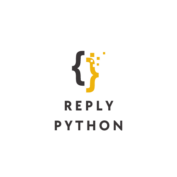 Python stands out in the realm of programming languages for its versatility and simplicity. Unlike many other languages, Python emphasizes readability and ease of use, making it a favorite among beginners and seasoned developers alike. Its clean syntax and dynamic typing allow for faster development and easier debugging, setting it apart from more complex counterparts.
Python stands out in the realm of programming languages for its versatility and simplicity. Unlike many other languages, Python emphasizes readability and ease of use, making it a favorite among beginners and seasoned developers alike. Its clean syntax and dynamic typing allow for faster development and easier debugging, setting it apart from more complex counterparts.
One of the key differentiators of Python is its extensive library support, offering a wide range of pre-built modules for various tasks. This rich ecosystem enables developers to accomplish more with less code, boosting productivity and efficiency. Additionally, Python’s focus on code readability and maintainability makes it a top choice for projects of all sizes, from small scripts to large-scale applications.
How is Python Different from Other Programming Languages
Python stands out among programming languages due to several key features that make it a versatile and user-friendly choice for developers of all levels. Its readability, clean syntax, dynamic typing, and vast library support contribute to its widespread adoption and efficiency in software development.
Readability and Syntax
Python’s emphasis on readability and simplicity sets it apart from other languages. Its clean and easy-to-understand syntax allows developers to write clear and concise code, making it ideal for beginners and experienced programmers alike. The language’s indentation-based structure promotes standardized formatting, enhancing code readability and reducing the chances of errors.
Dynamic Typing
One of Python’s distinctive features is its dynamic typing system, which allows variables to be assigned without specifying their data type explicitly. This flexibility enables developers to write code more quickly and with fewer constraints compared to statically-typed languages. Python’s dynamic typing simplifies the development process by automatically determining variable types at runtime, leading to faster prototyping and increased productivity.
Extensive Libraries and Frameworks
Python boasts a rich ecosystem of libraries and frameworks that provide pre-written code to simplify various tasks. This extensive support enables developers to leverage existing tools and solutions, reducing development time and effort significantly. From data analysis to web development, Python’s libraries like NumPy, Pandas, Django, and Flask offer robust functionality and accelerate the creation of diverse applications.
Python vs. Java
When comparing Python to Java, several key differences stand out, influencing developers’ preferences for different use cases.
Syntax Comparison
Python is renowned for its simple and clean syntax, emphasizing readability and allowing developers to write clear code with fewer lines. In contrast, Java requires more verbose syntax, making  it somewhat more complex and demanding in terms of coding conventions. Python’s minimalist approach appeals to beginners and experienced developers alike, promoting faster prototyping and easier understanding of the codebase.
it somewhat more complex and demanding in terms of coding conventions. Python’s minimalist approach appeals to beginners and experienced developers alike, promoting faster prototyping and easier understanding of the codebase.
Java generally outperforms Python in terms of speed and performance, especially in resource-intensive tasks and large-scale applications. Due to Python’s interpreted nature, it can be slower than Java, which is a compiled language. Java’s strong typing system also contributes to its performance advantage over Python in certain scenarios where speed is critical.
Use Cases
Python is favored for its versatility in web development, data science, machine learning, and automation tasks due to its extensive library support and ease of use. On the other hand, Java is commonly chosen for enterprise-level applications, Android app development, and projects requiring high performance and scalability. Both languages excel in different domains, appealing to developers based on their specific project requirements and objectives.
Python vs. C++
When comparing Python and C++, several key differences stand out that highlight the strengths and weaknesses of each language in various contexts.
Memory Management
 In terms of memory management, Python handles memory automatically through its built-in garbage collection, making it easier for developers to work without worrying about memory allocation and deallocation. In contrast, C++ requires manual memory management, giving developers more control over memory usage but also increasing the risk of memory leaks and segmentation faults if not handled properly.
In terms of memory management, Python handles memory automatically through its built-in garbage collection, making it easier for developers to work without worrying about memory allocation and deallocation. In contrast, C++ requires manual memory management, giving developers more control over memory usage but also increasing the risk of memory leaks and segmentation faults if not handled properly.
Python is widely used in web development, data science, machine learning, artificial intelligence, and automation due to its ease of use and vast library support. It is particularly popular for rapid prototyping and developing applications quickly. Conversely, C++ is preferred for system programming, embedded systems, gaming, and performance-critical applications where speed and efficiency are paramount. C++’s ability to directly manipulate hardware and optimize code for performance makes it a top choice for applications requiring low-level access to system resources.

